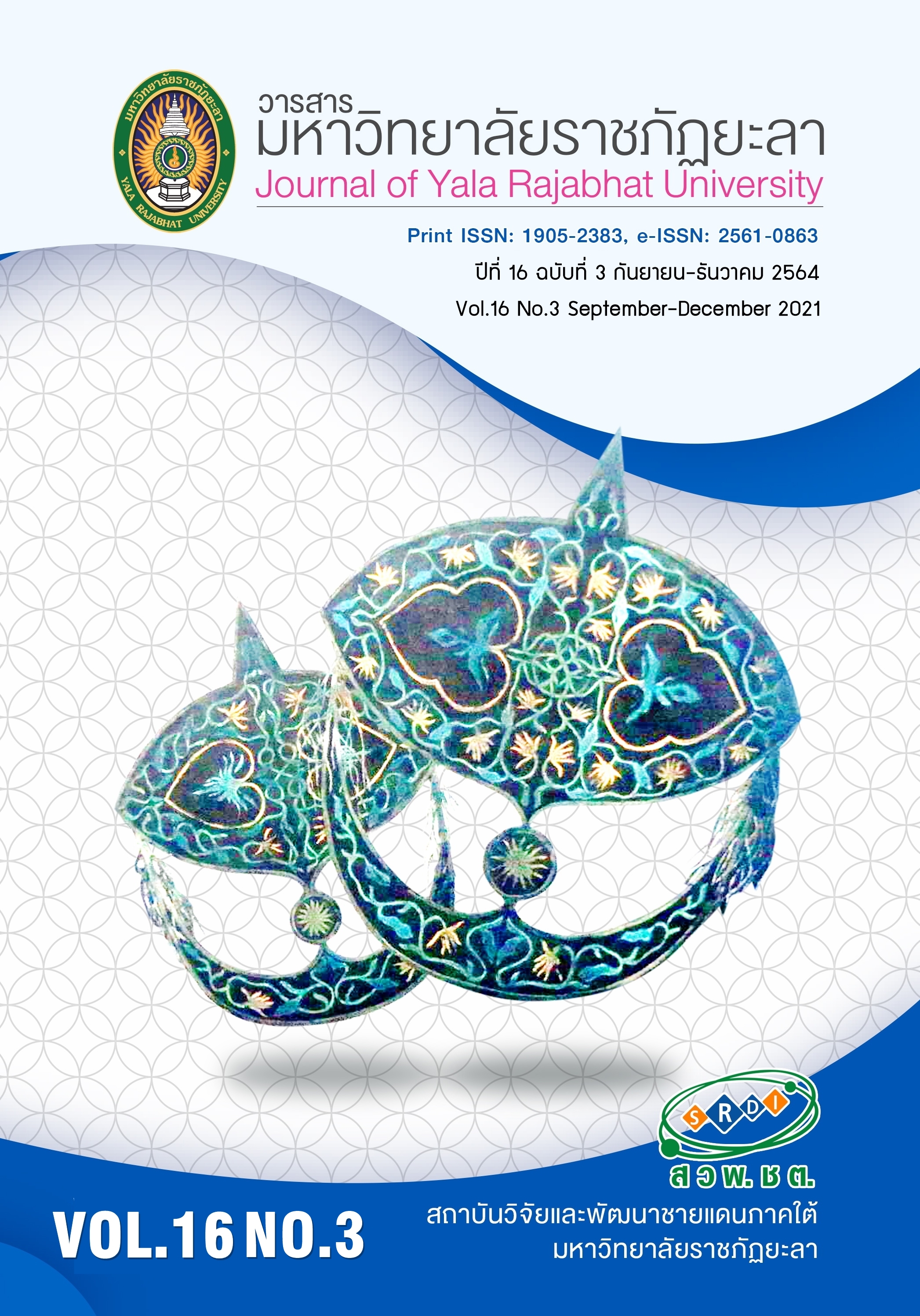Pandanus: Weeds from The Field towards Value Creation Products
Main Article Content
Abstract
The purpose of this academic article was to present about Toei Nam (Pandanus capusii Mart.), which is abundant in the local area, in the area of Wang Phaya Subdistrict, Raman District, Yala Province. Toei Nam is a weed that grows naturally in the fields. Toei Nam can be used to benefit and create value due to their toughness, strength, soft texture, and breathability. The process of making raw materials takes a long time, from picking, dyeing, and the process of basketry that is considered folk wisdom. In the production process, in the past, villagers woven it to use as a mat or Sat (Southern dialect) used for flooring to sit and eat or sleep, including products for putting things such as rice, fruits, tobacco (strong chewing tobacco), and dried leaves of the nipa palm. Later, it was developed and transformed in the form of appliances and souvenirs. There is a process of dyeing bright colors and then weaving alternating colors. At present, dyeing uses the technique of tie-dyeing fabrics to build on by tying pandan strands using straw ropes to tie them tightly. Then dye it to create a pattern that looks like a gradation of color from one color to another. In addition, despite the development of the product, it is not as popular as other types of wicker. What is noteworthy is that there are no inheritors of wisdom as they should be. The author has suggested that agencies such as the Raman District Community Development Office, Yala Province Industry, and related parties should come in to promote and create sustainable learning resources.
Article Details
Copyright Notice articles, information, images, etc. was published in this Journal of Yala Rajabhat University is a copyright of the journal Yala Rajabhat University. If any person or deparment wants to bring all or part of it for publish or take any action. Authorization is required in written form from the Journal of Yala Rajabhat University only.
References
Bunchuay, S. (2012). A study of thai woven agriculture for the design of Ban San Suk recreation center. (Master's thesis). Silpakorn University, Faculty of Decorative Arts, Interior Design. (in Thai)
Eisaw, A. & Kiadtinaruemol, J. (2020). Academic service performance report of the GSB Yuwaphat Rakthin project: community enterprise development of the Santiphap Wang Phaya housewives group. Yala: Yala Rajabhat University. (in Thai)
Thaitambon.com. (2015). Information on Wang Phaya sub-district, Raman district, Yala province [online]. Retrieved on December 15, 2020. https://www.thaitambon.com/tambon/950614. (in Thai)
Worawongpitak, J. & Ellah, F. (2019). A research report on management model for sustainable pandanus basketry products from Ban Pong Bulo community, Sateng Nok subdistrict, Mueang district, Yala province. Yala: Yala Rajabhat University. (in Thai)
Thaweesinsopha, F. & Thaweesinsopha, K. (2016). A study of the wisdom way of pandanus basketry, Ban Duhun to community-based tourism in Trang province. Trang: College of Hospitality and Tourism Rajamangala University of Technology Srivijaya Trang Campus. (in Thai)
Sawatdichai, N. (2015). Public furniture design project to relax on the beach from pandanus materials: a case study for use at Koh Kradan beach in the responsibility supervised by Hat Chao Mai national park. (Master's thesis). Silpakorn University, Faculty of Decorative Arts, Department of Product Design. (in Thai)
Community Forest Management Office, Royal forest department (2017). Toei Panan (Pandanus), Trang: N.P.G. Enterprise LTD., Part. (in Thai)
Chooseng, K., Prabad, S. & Kri-nern, K. (2009). A research report on the development of caribbean agave tie dye products for the Hup Ka Phong agricultural cooperative group. Bangkok: Rajamangala University of Technology Phra Nakhon. (in Thai)

